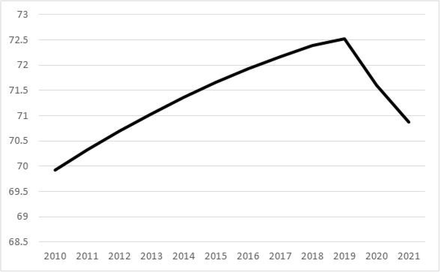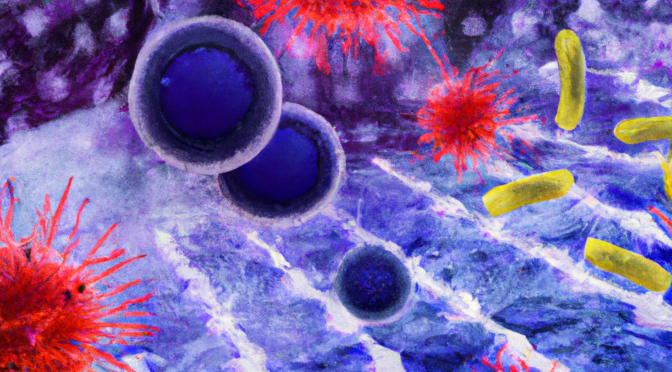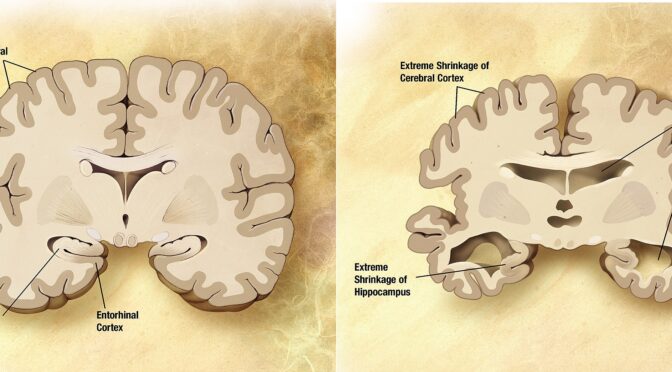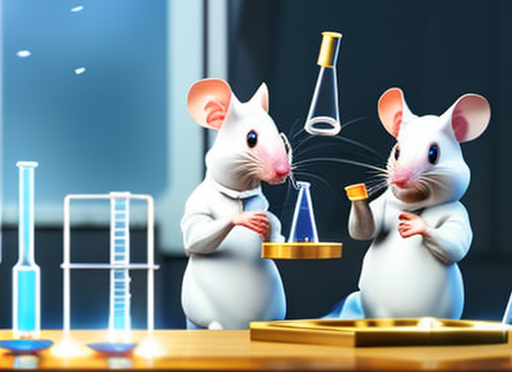“All my possessions for a moment of time.”
Attributed to Queen Elizabeth I on her deathbed, age 69, in 1603.
This month’s theme: Decrease in life expectancy. After the Covid-19, (when) will the rebound come?
Introduction
The average life expectancy has improved every year over the past 70 years, starting from the end of World War II. From around 1948, life expectancy surpassed the pre-war level. This means that concerning life expectancy (and also likely the average global wealth and happiness), each year was globally better than ever.
This seemed an unbreakable trend, even if life expectancy significantly decreased in some parts of the world. For example, the decrease in countries of the “European communist bloc” during the seventies of the last century and at the end of the 20th century in many African countries due to Aids didn’t interrupt the global trend.
But Covid-19 changed the situation dramatically, which many of us, especially longevists, still underestimate.
Statistics
To fully understand the situation, these are the global data:
Between 2000 and 2019, life expectancy increased by more than 5 years.
In 2020 and 2021, we lost about one-third of this, returning to the situation around 2013. Patrick Heuveline in Population and Development Review wrote: After 69 years of uninterrupted increase from 1950 to 2019, the global life expectancy is estimated here to have declined by -0.92 years between 2019 and 2020 (for both sexes) and by another 0.72 years between 2020 and 2021.
The worst situation among the big industrialized countries is undoubtedly in the USA. This is the country with the highest budget in the world used for health (in absolute terms, per inhabitant, and in percentage of the GDP). This is the country with the most (reputed) scientists in the world. Still, life expectancy dropped to the level it was at the end of the 20th century (1996)!
We do not have much information concerning the evolution of 2022. However, we have relatively good data for European countries. We can say that the situation in this continent seems not to worsen anymore but also (still?) not going back to the pre-COVID situation. We know, for example, that life expectancy decreased in Denmark, was stable in Belgium, and was slightly improving in France.
To follow the evolution of the last months, the site Momo is monitoring European MOnthly MOrtality activity, aiming to detect and measure excess deaths related to seasonal influenza, pandemics, and other public health threats. The last months seem back to (but not better than) the pre-COVID situation.
Primary Cause: COVID
In 2020, the Centers for Disease Control and Prevention reported ten leading causes of death for adults aged 65 and above:
-
- Heart disease: 556,665
- Malignant neoplasms: 440,753
- COVID-19: 282,836
- Cerebrovascular: 137,392
- Alzheimer’s disease: 132,741
- Chronic lower respiratory disease: 128,712
- Diabetes mellitus: 72,194
- Unintentional injury: 62,796
- Nephritis: 42,675
- Influenza and pneumonia: 42,511
Of course, Covid-19 is new in this list compared to the former years. The number of victims is probably an underestimation.
Direct and Indirect medical consequences
Long Covid
Long COVID is of particular concern among older people (i.e., 65 years or older), who are at greater risk of persisting symptoms associated with COVID-19. In addition, this disease might trigger or exacerbate chronic conditions commonly in older people, such as cardiovascular diseases, respiratory diseases, neurodegenerative disorders, and functional decline. In addition, the disruptive effects of COVID-19 on older people should not be underestimated; lockdowns and other restrictions might have reduced the social interactions of older people, and they are also likely to have lost a spouse or loved one during the pandemic, which can contribute to mental and physical decline.
No rebound effect, at least until 2022
Logically, after the high death toll of COVID-19, there should be a “rebound effect” because « weak people » were « eliminated. » and « strong people » survived. Such an effect was not established, probably among other things, because of the negative consequences of the long covid.
Deficit of other medical interventions
Due to the COVID-19 crisis and all measures to prevent contamination, it has been challenging to have normal handling of many other diseases, especially in rich countries, and to keep the rhythm of vaccination, especially in poor countries. It is also probable that the trust concerning vaccination has been decreasing.
No rise in suicides in the older population
It was thought by many that the lockdown, restrictions and crisis would cause a surge in suicide. This was globally not the case as far as we know (statistics concerning suicides are not always reliable).
Other possible causes of the decrease in life expectancy are food, (air) pollution, and other environmental aspects.
Sadly, Covid-19 is not the only reason, and we could have a reduction in longevity. There are at least three reasons to be pessimistic.
Firstly, obesity and too-processed food. Eating processed and refined foods can lead to weight gain and obesity because they are typically low in protein and high in fats and carbohydrates. This can cause people to overeat these foods to satisfy their body’s protein needs. During the last decades, on one side, the quality and quantity of food have been constantly improved, and very toxic substances are far less present. But new substances and « toxic cocktails » can gradually accumulate.
Secondly, Air pollution: Similarly to food, air pollution is at the same time less a problem and more a problem. It is less of a problem, especially in Europe and North America, because very heavy pollution, fast and lethal, is less present. For example, the Great Smog of London killed thousands of people in 1952, But it is more of a problem concerning long-term effects due to small particles, microplastics…
One of the most potentially worrying aspects of global health is the global decrease of the population of arthropods (insects and arachnids) in most parts of the world. This is very worrying because insects are supposed to be relatively resistant to many substances. Their number seems to decrease even in regions where natural spaces are improving. We do not know why this happened, but one of the causes is most probably the global rise of polluted substances.
Of course, this could affect humans in the future. Maybe the rise of some substances or « toxic cocktails » already impacts us without noticing, except through weak signals like allergies.
Last but potentially not least, global warming is increasingly killing people. There is no negative global impact yet because, at the moment, there are more people dying of situations related to (too) cold situations than (too) warm situations. However, this could dramatically change when global warming will provoke higher and longer heat waves.
Conclusion: What could longevists do?
Covid-19 was not only a bad news concerning the struggle against senescence. Covid-19 was more related to aging than most communicable or non-communicable diseases. This disease pushed States, international organizations, and health authorities to invest more in prevention, research, and economic measures than for any other disease.
“We civilizations now know that we are mortal” wrote Paul Valery in 1919, at the end of the World War I. About one century later, we know that even fast scientific and medical progress can coexist with decreased health (and wealth).
To inverse this, we should be better organized, less bureaucratic, and more transparent, use fewer patents and IP, and really share more knowledge in an open-source vision.
We also need to think about resilience and health more systematically. We need data that is more reliable and really accessible for scientists, with more clinical trials. The results, bad, good, and even non-significant, must be available to open avenues (if positive), to close doors (if negative or neutral), and to be further analyzed and curated thanks to the Artificial Intelligence of today and tomorrow.
It could be that the decrease in wealth is temporary, where the accumulation of knowledge doesn’t stop. The negative snowball effect could stop. However, this is not sure. We could be generous to the citizens to rise again collectively as fast as possible. This is also generosity to our future senescent self.
The good news of the month: The mortality rate of naked mole rats does not increase with age
Most small mammals have a short life span. Naked mole rats are among the exceptions. The oldest known naked-mole rat is almost 40 years old, living ten times longer than the oldest mouse or rat.
But there is more positive news. These rodents have been followed for many years; until now, they do not seem to age. More precisely, even if there are some signs that they get old, the known statistics establish that their probability of dying doesn’t increase at all with age. This was already announced in 2018 and was firmly confirmed with data from the same group of animals a few days ago.
For more information









